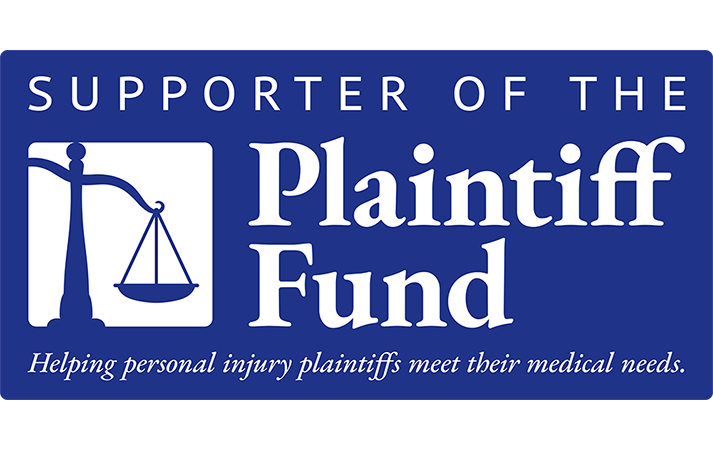A. How and When Medicare Liens Arise
Under the Medicare Secondary Payer Act, found at 42 U.S.C. §1395y(b) (MSP), Medicare has a right to be reimbursed for payments it has made for a Medicare beneficiary’s medical treatment when the Medicare beneficiary is compensated for the treated injury by a third-party source. While Medicare’s rights to recovery under the MSP are so strong that they have been described as a super lien, that does not mean that your client has to always pay the full amount requested by Medicare.
The MSP right to reimbursement includes both a direct statutory right and a subrogation right, with a variety of recovery remedies available to the U.S. Government. In some jurisdictions, similar MSP recovery rights extend to privately administered Medicare benefits under Part C (Medicare Advantage Organizations or MAO’s) and Part D Prescription Drug Plans via the MSP’s private cause of action provision. The recovery rights described exist without regard to the date of service for the medical items, services, or expenses (medicals). Most attorneys know that they should check to see if traditional Medicare or a MAO has paid for medicals related to a compensated injury and address paying the amount or negotiating payment for same from the settlement proceeds. This article will explore ways to secure satisfactory lien resolution, focusing on traditional Medicare liens.
It should be noted that if a Medicare beneficiary begins billing Medicare or a MAO for injury related medicals after the settlement date/date compensated for the tort claim, recovery rights associated with those post settlement medicals exist in the same way that recovery rights exist for pre-settlement injury related Medicare covered medicals. Under such a post settlement scenario, the need for a Medicare lien investigation and resolution could essentially start all again.
B. Medicare Secondary Payer statute, 42 U.S.C. § 1395y(b) (MSP)
1. History of the Medicare Act and the Medicare Secondary Payer Act.
a. Background and Scope – Both arise from the Social Security Act of 1935. Medicare is a federally funded single payer national healthcare insurance administered by the U.S. federal government, through the Department of Health & Human Services (HHS) under authority of the Social Security Act of 1935. Medicare is funded by a payroll tax, premiums and surtaxes from beneficiaries, and general revenue. HHS delegates running the Medicare program and interpreting Medicare law and implementing regulations to the law to the Centers for Medicare & Medicaid Services (CMS). Medicare covers medical expenses not on the list of exclusions found in 42 U.S.C. §1395y(a)(1) typically for U.S. Citizens (although exceptions exist allowing eligibility for some non-US Citizens as well), who are 65 and older, or younger than 65 with disability status determined by the Social Security Administration as well as people with end stage renal disease (ESRD) and amyotrophic lateral sclerosis (ALS or Lou Gehrig’s Disease). It is made up of parts such as Part A (mainly inpatient hospital insurance and skilled nursing care) and Part B (doctor visits, durable medical equipment, outpatient hospital care and some physical and occupational therapy and some home health care), the two together are known as traditional Medicare; Part C, covering Part A and B services but administered by private insurers; and Part D, covering Prescription Drug Plans (PDPs) that are also administered by private insurers.
b. SSDI is for people who qualify under the Social Security Administration’s definition of disability. SSDI payments start about 5-6 months after SSDI eligibility is determined depending on the date eligibility is first established. Individuals approved for SSDI also become eligible and qualify for Medicare two years after they begin receiving the SSDI payments. Both SSDI and Medicare are entitlement-based in contrast with Medicaid and SSI, that are largely needs-based.
c. Since the Medicare law’s inception in 1965, Medicare has been secondary to Workers’ Compensation. Therefore, if an injury occurred while at work, the Workers’ Compensation carrier would take responsibility for payment of those injury related medicals in accordance with the applicable state statutory rates and procedures. However, in 1965, there was no provision in the law pertaining to payment of medical bills related to liability claims for injured Medicare beneficiaries. Therefore, Medicare would (most often) pay for all medical treatment within its scope, leaving private insurers (other insurance) to work out who would cover non-Medicare covered services.
2. The Medicare Secondary Payer Act (MSP) was Enacted in 1980.
a. In 1980, the Medicare Secondary Payer Statute (MSP) was enacted. 42 U.S.C. §1395y(b) et seq. is commonly called the MSP Act or MSP Statute and is also referred to as the Medicare Secondary Payer provisions of the Social Security Act (SSA). While it has different statutory references, it is the same law and has parallel sequences of each number and letter after the section 1395y or 1862 as follows: 42 U.S.C. § 1395y(b) = 42 U.S.C. §1862(b) of the SSA.
b. The MSP mandates Medicare to be a secondary payer to other forms of health insurance such as group health plans (GHPs), as well as other payment sources such as non-group health plans (NGHPs) when these primary plans are responsible for payment.
c. A “primary plan” is defined in 42 U.S.C. §1395y(b)(2)(A) to mean “a group health plan or large group health plan to the extent that clause (i) applies, and – a workers’ compensation law or plan, – an automobile or liability insurance policy or plan (including a self-insured plan) – or no fault insurance, to the extent that clause (ii) applies. An entity that engages in a business, trade or profession shall be deemed to have a self-insured plan if it carries its own risk (whether by a failure to obtain insurance, or otherwise) in whole or in part. 42 U.S.C. 1395y(b)(2)(A)(ii).”
d. All plans other than the group health or large group health plans are categorized by the Centers for Medicare & Medicaid Services (CMS) as Non Group Health Plans (NGHPs). While the MSP applies to Group Health matters, it is in the NGHP area that the MSP compliance industry focuses its attention. NGHPs are those entities that demonstrate obligations of payment as primary payers by either statute (think workers’ compensation or no fault insurance) or by virtue of resolution of claims through settlement, judgment, award or other payment (think liability matters), regardless of whether liability is admitted. Most liability releases specifically deny liability for alleged liability claims. The payment obligation that triggers the MSP arises in the tort scenario when payment is made. There are no defenses listed in the MSP associated with how the demonstration of the obligation arises; when a party begins to make payments under a statute or contract for insurance such as workers’ compensation or under the state’s no fault law under terms of an insurance contract, or when a party settles a liability case, the payment obligation is “demonstrated” and the party responsible for payment is by the MSP, primary to Medicare.
e. The MSP was enacted to curb the rising costs of Medicare and designed to make insurers responsible for payment of injury related treatment primary payers and Medicare, the secondary payer. See Humana Medical Plan, Inc. v. Western Heritage Insurance Company, 832 F.3d 1229, 1234 (11th Cir. 2016). Regulations interpreting the MSP are found at 42 C.F.R. §411 et. seq.
f. To accomplish the goal of curbing Medicare costs, the MSP general rule – 42 U.S.C. §1395y(b)(2)(A) – prohibits Medicare from making payment when a primary plan should make the payment. Specifically, a Medicare payment may not be made
“to the extent that –
(i) payment has been made, or can reasonably be expected to be made, with respect to the item or service as required under paragraph (1) [pertaining to GHPs], or
(ii) payment has been made or can reasonably be expected to be made under a workmen’s compensation law or plan of the United States or a State or under an automobile or liability insurance policy or plan (including a self-insured plan) or under no-fault insurance.”
g. There is only one exception to the prohibition of Medicare making payment when there is a primary payer that should make the payment. The exception authorizes Medicare to make payments called conditional payments if a primary plan “has not made or cannot reasonably be expected to make payment with respect to such item or service promptly.” 42 U.S.C. §1395y(b)(2)(B)(i).
- Prompt or promptly, when used in connection with primary payments, except as provided in § 411.50, for payments by liability insurers, means payment within 120 days after receipt of the claim. 42 C.F.R. § 411.21.
- Under 42 C.F.R. §411.50, prompt or promptly, when used in connection with payment by a liability insurer means payment within 120 days after the earlier of the following:
(1) The date a claim is filed with an insurer or a lien is filed against a potential liability settlement.
(2) The date the service was furnished or, in the case of inpatient hospital services, the date of discharge. 42 C.F.R. § 411.50
The payments allowed to be made by Medicare are considered “conditioned on reimbursement” to Medicare by the primary plan. These payments could occur either before a settlement or after a settlement so settling parties should always address and make sure to resolve conditional payments a/k/a Medicare liens that arose prior to settlement from the settlement proceeds (even if negotiated to a compromised/reduced number) and additionally, due to the MSP, settling parties should also consider how to avoid conditional Medicare payments after a settlement.
h. Congress enacted the MSP provisions to address enforcement of Medicare as a secondary payer to WC and included the various other types of insurance as primary plans at that time.
i. Between 1980 and 2001, there was very little enforcement of the MSP.
j. CMS Memos of note. In July 2001, CMS issued the Patel memo which mentioned Medicare Set-Asides (MSAs) for the first time. In 2011 – the Stalcup Memo from the Dallas CMS Regional Office was the first time liability MSAs (LMSA’s) were mentioned in a CMS memo with the most detailed guidance on CMS’s position of a need to consider and protect Medicare’s interests for liability as well as Workers’ Compensation settlements to protect the Medicare Trust Funds in a manner consistent with the MSP.
k. The MSP gives Medicare both direct “lien rights” (42 U.S.C. §1395y(b)(2)(B)(iii)) to be able to collect its conditional payments as well as subrogation rights whereby the MSP subrogates the United States to “any right under this subsection of an individual or any other entity to payment with respect to such item or service under a primary plan.” 42 U.S.C. §1395y(b)(2)(B)(iv). This can be an important distinction when it comes to how CMS and courts interpret whether and to what extent an apportionment calculation may be performed to the outstanding conditional payment amount by discounting procurement costs including attorney’s fees and costs in securing the settlement, judgment or award. Actions by the U.S. on behalf of HHS/CMS via the MSP’s direct right of recovery (through the Department of Treasury or potentially the Department of Justice) against entities responsible for payment or those that have received some of the settlement proceeds is separate from its right of subrogation to recover reimbursement of Medicare conditional payments. The MSP’s direct right of recovery has in some cases been interpreted to not be limited by the equitable principle of apportionment stemming from the subrogation right. See Social Security Act, § 1862(b)(1), (b)(2)(B)(ii), as amended, 42 U.S.C.A. § 1395y(b)(1), (b)(2)(B)(ii); 42 C.F.R. § 411.24(c). Zinman v. Shalala, 67 F.3d 841 C.A.9 (Cal.1995).
l. Considering Medicare’s future interests. Without a plan for future care, CMS’s policy regarding settlements has been to presume that the entire settlement amount is designed to compensate the injured party for future medical expenses. While CMS has not yet promulgated regulations regarding how Medicare beneficiaries should ideally protect Medicare’s future interests, because the MSP liability extends to the primary payer as well as any entity or person that receives payment from a primary payer, it is common for settling parties to discuss and consider and sometimes estimate Medicare’s potential future exposure (and therefore the potential recovery that could result from said exposure) on a case prior to settlement. This analysis may involve the use of a MSA allocation report.
m. Having an injured party agree to use other insurance or to agree not to bill Medicare is not adequate according to CMS’s Workers’ Compensation Medicare Set-Aside Arrangement (WCMSA) Reference Guide. This Reference Guide focuses on the voluntary submission process for MSA’s in the Workers’ Compensation realm that meet certain workload review threshold dollar/time frame criteria. In the absence of a corollary guide for liability settlements, the WCMSA Reference Guide stands as the current CMS policy for all NGHP matters such as liability (including self-insurance), automobile, Workers’ Compensation, and No Fault settlements. With respect to any matter or settlement inside or outside the WCMSA Reference Guide workload review thresholds, CMS has indicated that without a plan for future care, CMS could deny injury related medicals up to the entire amount of the settlement. (See discussion on pages 8-9, under Section 8.1, titled Review Thresholds).
n. Keep in mind that there is no reference to a MSA in the MSP or any of its corresponding regulations. While Liability MSA allocation reports (LMSA’s) are not currently being reviewed by CMS Regional Offices or the Workers Compensation Review Contractor (WCRC), the current contract that started in 2018 that the WCRC operates under, contemplated some level of review for LMSAs. While regulations or at least notification of regulations, are expected as early as October 2019 regarding protection of future interests for liability settlements, parties in the liability field (and Workers’ Compensation settlements outside of workload review threshold time periods/amounts) have generally been left to “read between the lines” as to what is an adequate consideration and protection of Medicare’s future interests. For those Medicare beneficiaries that are more risk adverse, an option exists to request the respective Regional Office (RO) to update the common working file of any Section 111 reported settlement with an agreed LMSA amount in an effort to help provide a ceiling to the amount of money that would need to be exhausted before Medicare should begin paying for the injured plaintiff’s injury related Medicare covered medicals. Attorneys should counsel their clients to explain these sensitive issues and document their files in a way that will help show how Medicare’s interests were considered in the settlement.
o. In conjunction with considering a Life Care Plan and possible consultation with an economist, plaintiffs’ counsel may also choose to obtain a LMSA to learn of potential future medical expenses (whether Medicare allowable and reimbursable or not) as an aid to understanding and articulating some of these important economic damages for his or her injured client. Defense counsel will typically want to do their own calculations according to the standards set by CMS policy to get a grasp on the Medicare exposure issue regarding future medicals. This article will not address the protection of Medicare’s future interests further, or the intricacies of equitable apportionment, as it relates to LMSA’s. However, evaluating a plan for future care such as setting aside a reasonable amount of funds for Medicare allowable and reimbursable future medicals, and restricting the spending of those funds to injury related Medicare allowable medicals, can often be a wise MSP compliance procedure. The balance of this article will focus on protecting Medicare’s past interests by investigating and addressing a variety of Medicare based conditional payment reimbursement claims (commonly referred to as liens) at or near the time of settlement.











